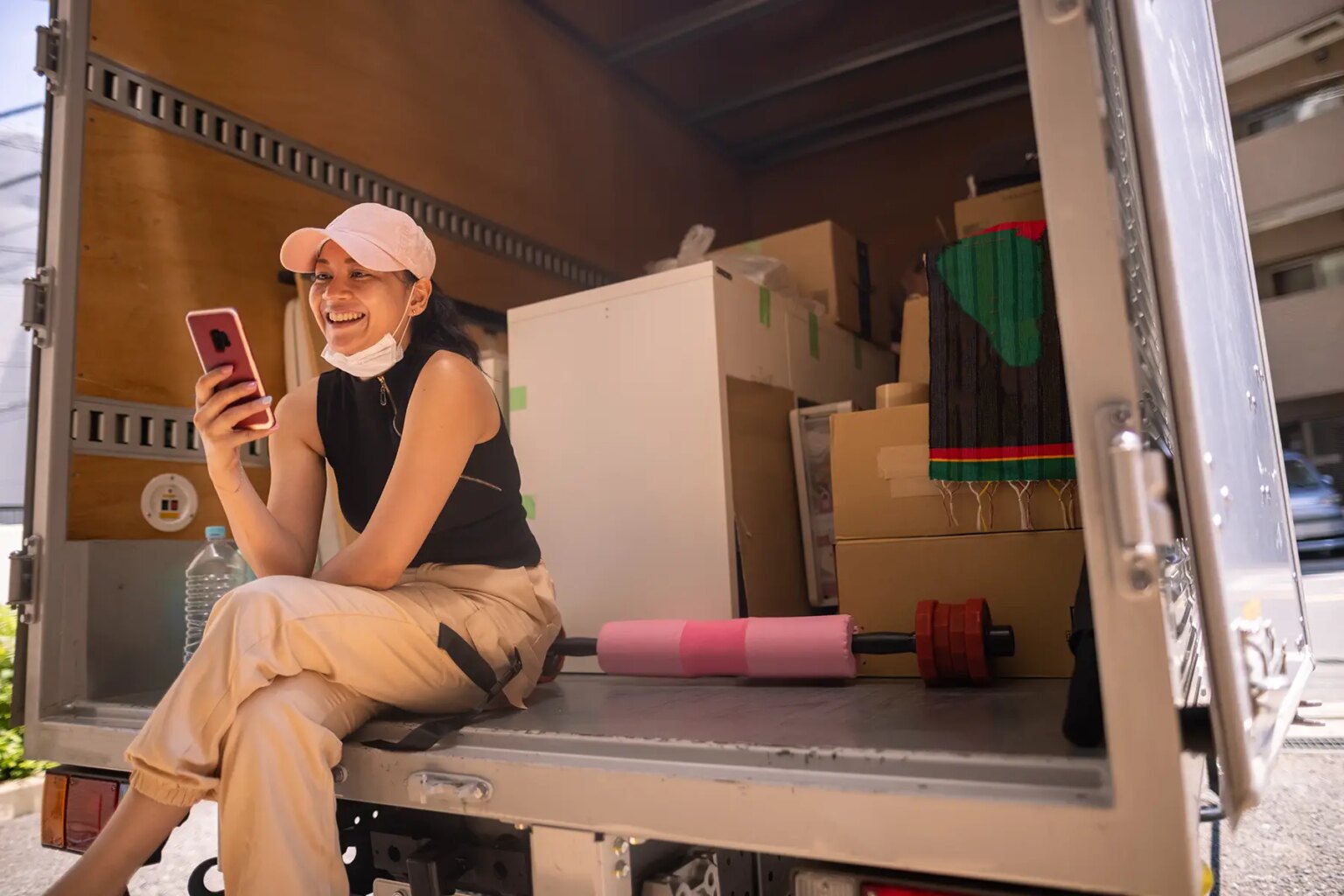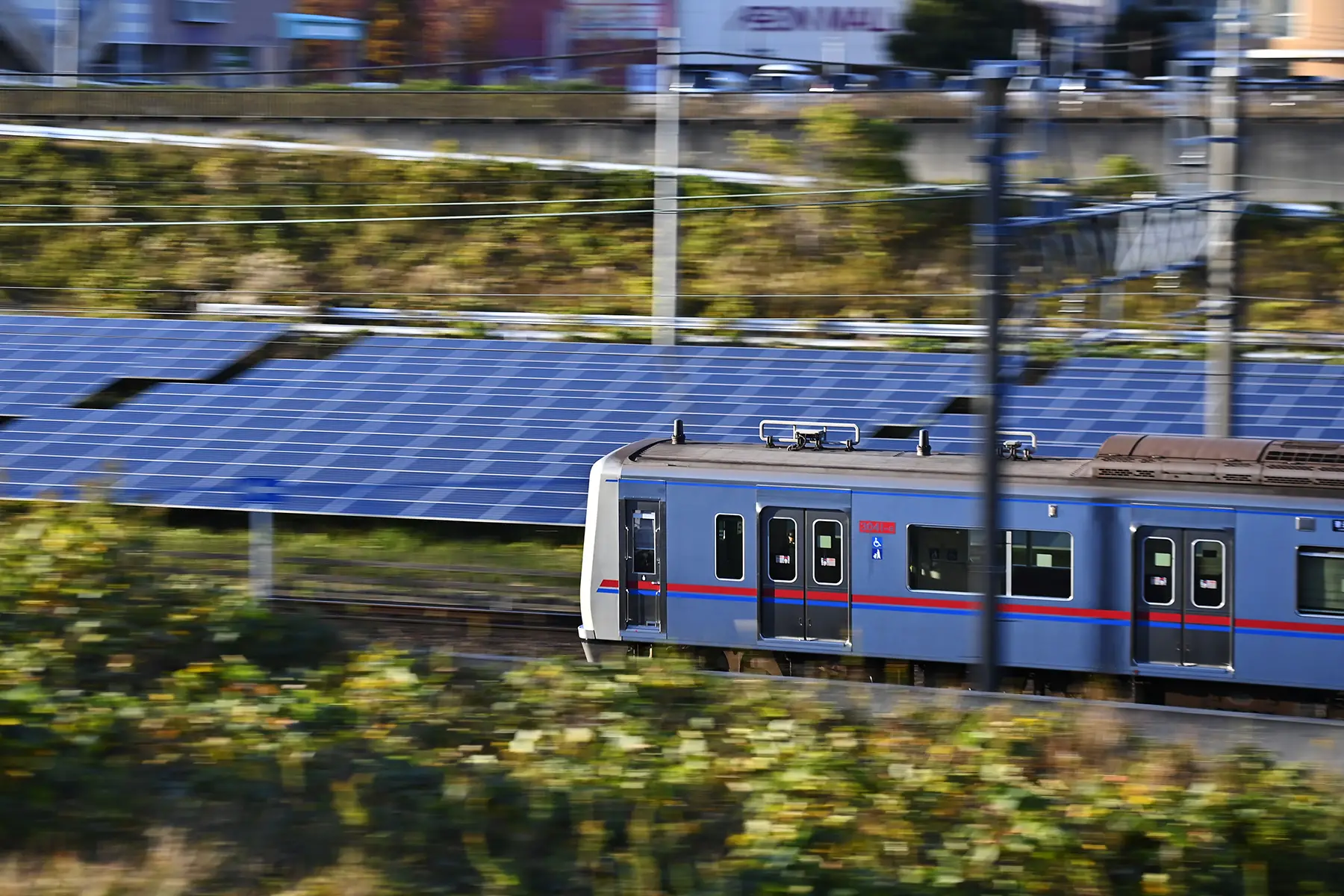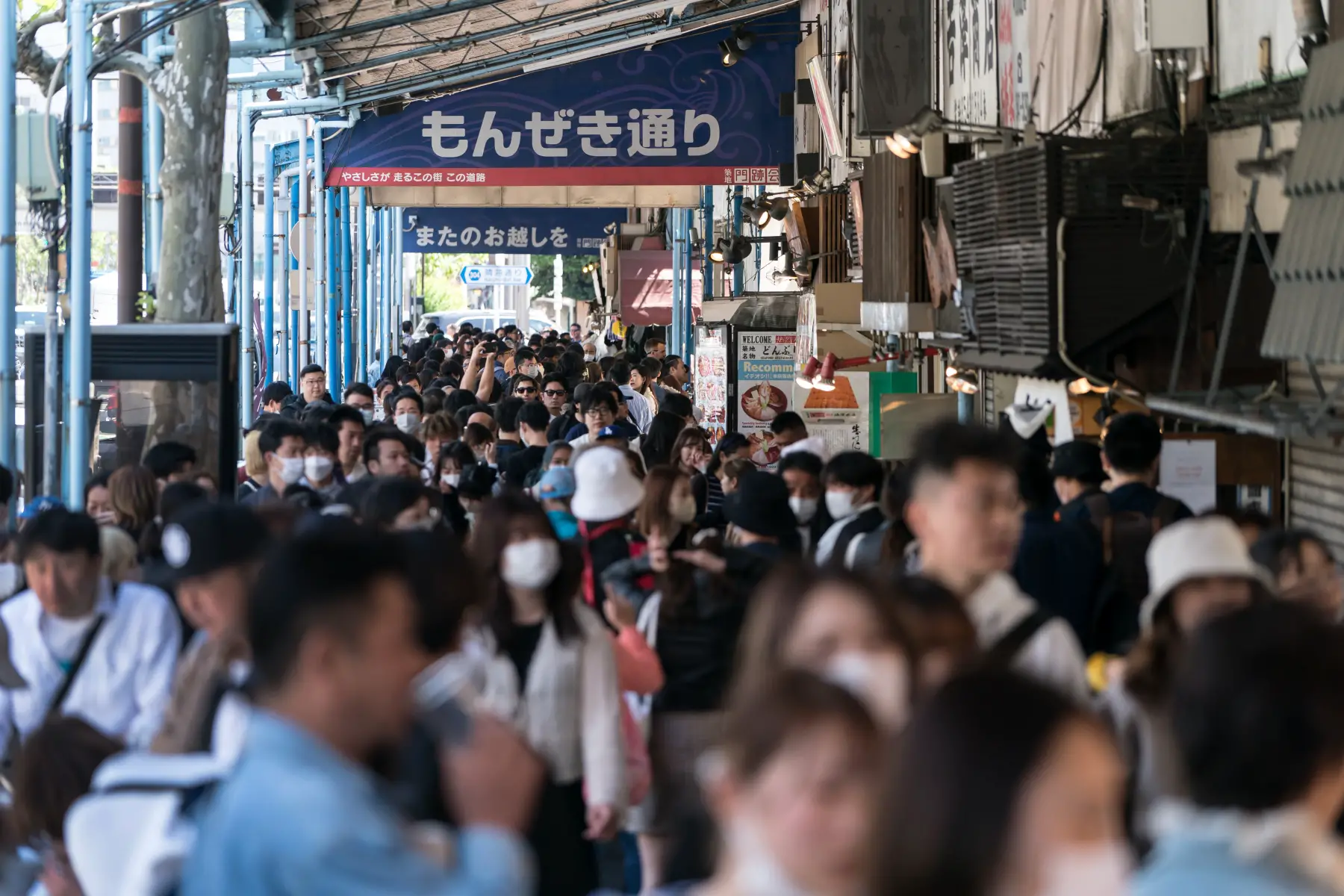So you’re relocating to Japan? It’s a hugely exciting prospect, but there’s so much to consider. The adventure starts before you’ve even reached Japan – researching where to live and the type of accommodation available, finding a job, perhaps identifying international schools for your kids, checking out the car market, and even exploring local entertainment options.
You’ll also need to think about how to move your belongings. Getting your personal effects across the world in one piece requires research and practical knowledge. Read on for the lowdown on relocation options to Japan, shipping methods, costs, timelines, and handy knowledge on import formalities, insurance, and lots more.
The Relocator
Planning a new life in Japan? Give yourself some peace of mind with The Relocator. On their easy-to-use platform, you'll be able to compare your options quickly, getting quotes from some of the biggest names in global relocations. Move abroad confidently with The Relocator.
Relocating to Japan from abroad
Removals to Japan take planning, whether you’re shipping a treasured art collection, a cat, or just a kettle. There are several ways to move your possessions – air and sea freight are two popular methods, but if you’ve only got a few items, you could bring them in your luggage.
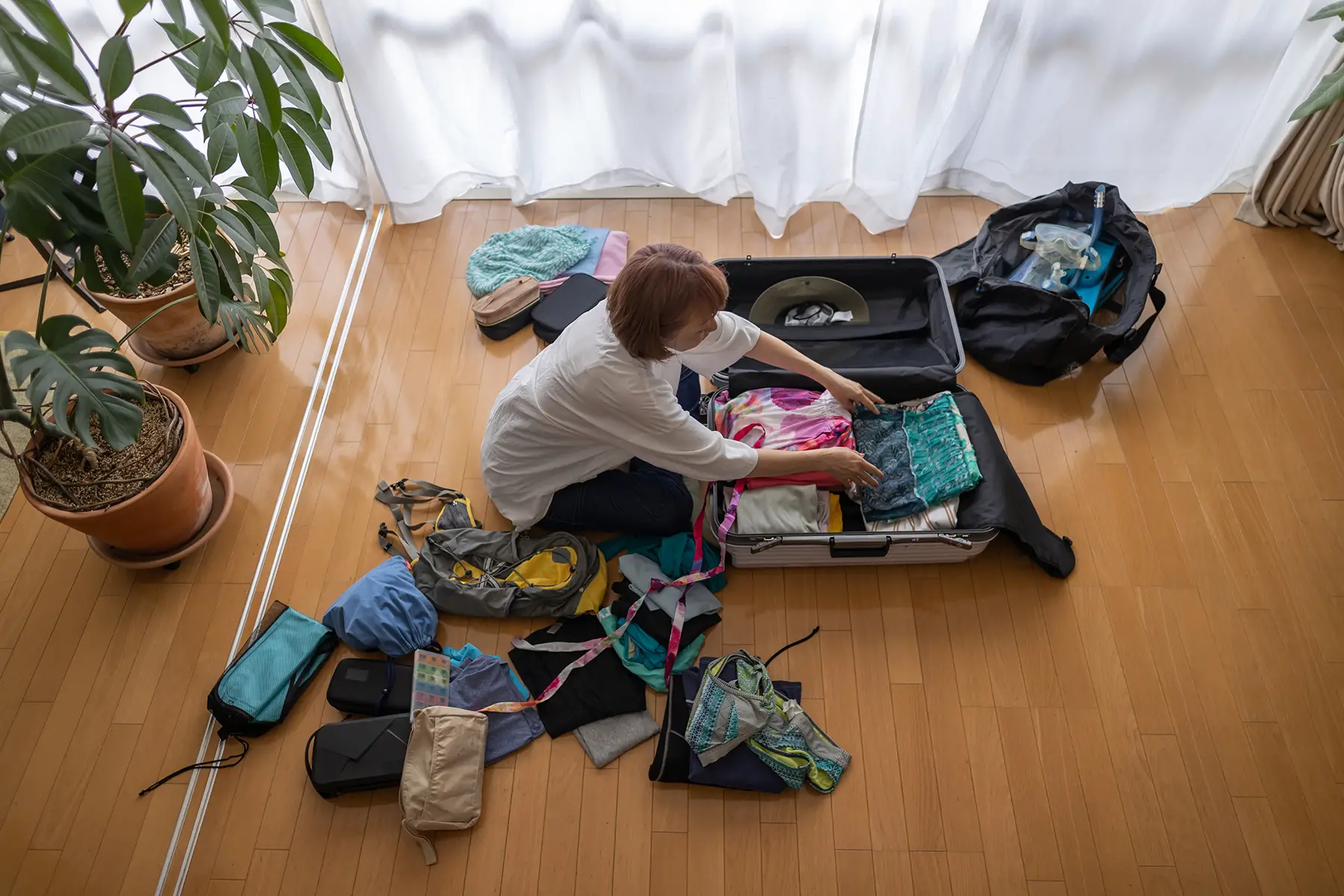
Another option is to use an international removal firm specializing in helping internationals to move to Japan. This comes at a higher price but can save you a lot of stress.
Which relocation method you opt for depends on several aspects. Think about what you need to bring and the timeframe you have available. Some items require more planning, especially if you are moving with a pet or a car.
How many people have relocated to Japan?
The number of foreign residents in Japan reached 3.07 million at the end of 2022. This was 11.4% more than at the end of 2021.
Japan’s strict border controls at the start of the COVID-19 pandemic brought fewer new arrivals between 2020 and 2022. But a steady stream of internationals started relocating to Japan as the country began relaxing measures and issuing residence permits.
Citizens from neighboring Asian countries accounted for the bulk of new arrivals into Japan in 2022. However, there are significant communities from North America, Europe, and Australasia.
Relocating to Japan with air freight
Explore the main things to consider with air freight removals to Japan.
Airports in Japan handling removals
All international airports in Japan handle cargo from around the world, including personal effects. These transport and logistics hubs have huge warehouses for storing, inspecting, and clearing freight for onward transit.
Japan’s leading air cargo hub is Narita in Tokyo (the world’s 10th biggest cargo handler in 2022). The next largest are Kansai near Osaka, and Haneda, also in the capital city. All three airports have world-class ground handling facilities.
Who should use air freight for removals to Japan?
If you’re on a tight schedule or short contract, air freight is a good option for your removal to Japan. It also gives you more certainty about when your personal effects will arrive.

Air freight works if you have found a place to live in Japan and want your possessions to join you quickly. Additionally, if you’re in Japan for a short time, it makes sense not to wait months for your belongings.
This method of transport is only really practical for relatively small cargo consignments. You wouldn’t normally send a sofa this way. In any case, Japanese homes tend to be ultra-compact, so sending a few boxes of personal effects is likely all you’ll need.
Air freight is also ideal if sending perishable items like food, but check the customs regulations before posting your package.
While air freight is undoubtedly a fast and convenient option, it comes at a cost, both literally and figuratively. Soaring fuel costs make this form of shipping a luxury, and it has a carbon footprint up to 30 times greater than a sea journey.
How does air freight work?
Sending goods by air is pretty straightforward. You’ll need to choose a company and complete a quote. Once you’ve provided them with some paperwork, they’ll pick up your belongings and send them to your new home.
You’ll need to start by comparing various air freight providers who operate between your home country and Japan. Most ‘traditional’ international shipping companies (like DHL, FedEx, and Maersk) offer air freight services. Another useful choice for smaller consignments is SendmyBag.
Once you have selected your preferred air cargo provider, call them or complete an online form for a quote. They’ll ask you for the intended date of shipping and the weight and volume of the consignment, as air freight has a maximum allowed carton size. The provider will then offer a quote and estimated timeframe for the arrival of the cargo into Japan.
Normally, the air freight company will email you the paperwork so you can complete it before shipping. You must then draft a detailed inventory of items (called the ‘packing list’) and perhaps sign customs forms and insurance documents. The company will also advise you on packing and warn you about prohibited items.
All air cargo firms offer door-to-door service. Alternatively, if you live close to an airport (空港, kuko), you can arrange to pick it up from the depot yourself, though this can be a hassle at large, busy airports.
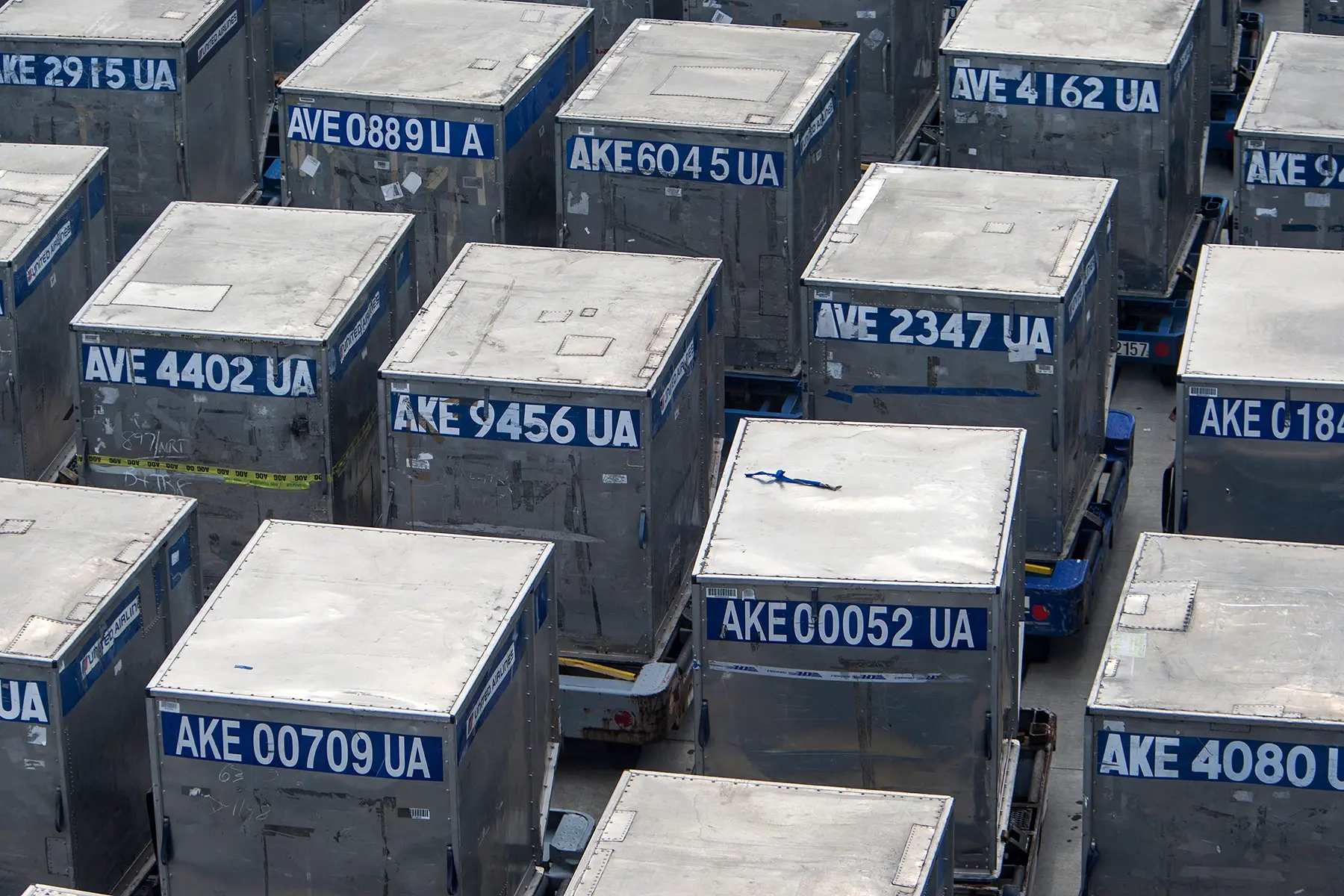
Once at the depot, customs will weigh the consignment and check that it meets the specifications and is properly labeled. It will then pass through a security scan, much like a massive version of the passenger scanner. Your personal belongings are then good to go!
What happens after my air freight arrives?
Once your consignment has arrived in Japan, it will be offloaded from the plane, and customs will hold it in a warehouse for inspection before they allow you to collect it.
The air cargo agent (or a local agent acting on their behalf) liaises with Japan Customs (税関, Zeikan) to complete import formalities. In theory, this should be relatively quick, but in practice, Japanese customs officials take their job seriously. Cargo imports are often subject to scrutiny and sometimes a thorough investigation before release.
Once ‘cleared,’ you can either collect the consignment from the depot or, more likely, have it delivered to your address. It is even possible to pay an additional fee to store the cargo at the airport warehouse until you are ready to have it delivered.
How long does air freight take?
One of the beauties of sending belongings by air is the sheer speed and flexibility. It’s still a good idea to plan ahead, as transit can take anything from a few days to a couple of weeks.
Your favorite comforter could be on a bed in Brussels on Monday and on your bed in Kobe on Thursday. As long as the aircraft has space to take the cargo, it’s good to go, although, of course, the further ahead you book, the better.
There are multiple daily flights from European capitals and other cities to Japan, so there should be ample choice.
How much does air freight cost?
Air freight costs vary according to fuel prices and demand, but it’s a good idea to budget between $5 and $15 per kilo for a shipment from Europe to Japan.
Door-to-door pick-up and delivery, customs clearance, and insurance almost certainly incur extra costs. Check the fine print carefully – the last thing you want is an unexpected expense.
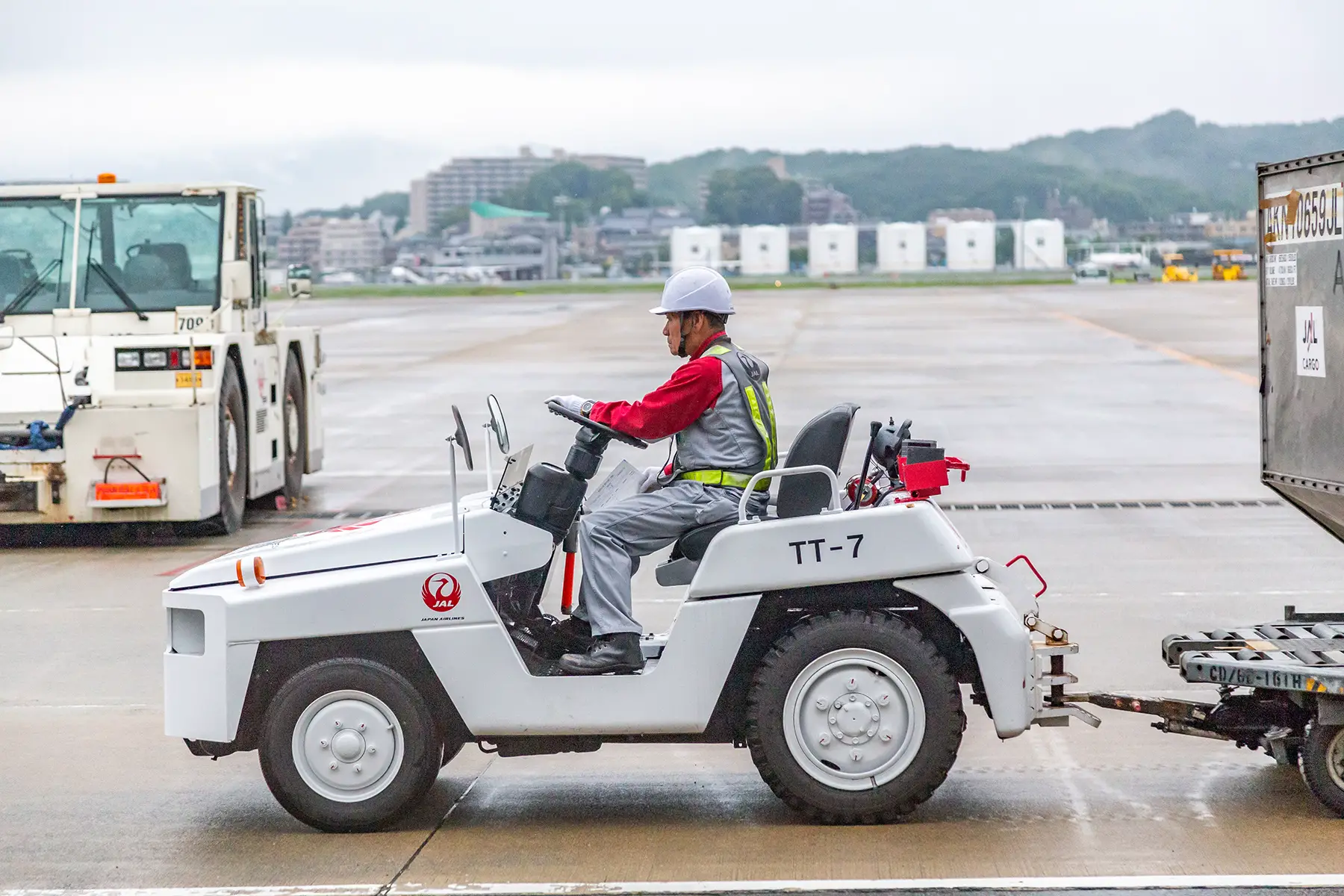
You usually pay the shipping agent up front – they typically take online payments and accept all major credit cards. In some cases, you may be able to pay upon delivery to Japan. However, you will need to settle any fines or customs duties before the release of the consignment.
How should I pack to send my belongings by air?
Many shipping agents offer packing services, but for small consignments, it is just as convenient to do it yourself. You should pack carefully, make sure the shipment is the right size, label it clearly, and keep a record of your belongings.
A major consideration is the size of your consignment. The maximum dimensions for standard air freight are 2.44m wide by 3.15m long. Your shipping agent will advise you on how high the package can be – this depends on the aircraft type.
Packing well is essential to keep your belongings in one piece. Bear in mind air cargo is subject to a lot of movement, including forklifts, conveyor belts, the aircraft hold, take-off, turbulence, and landing. It is essential to pack the contents tightly so they don’t move around (and break). Oh, and leave the fireworks and lithium batteries at home if you want to see your belongings again.
Your shipping agent can supply purpose-made sturdy containers such as double-wall cardboard boxes. If you want to avoid waste, ask them about eco-friendly or reusable options. You should assemble them well, using high-quality duct tape to seal them. However, double-check with the shipping company before you close them, as some boxes may need to remain open for inspection.
If necessary, label your containers with their final destination and any ‘Fragile’ stickers. It’s also a good idea to take photos of the contents before shipping in case you need to make an insurance claim for damage or loss.
How do I find an air freight company?
Hundreds of international freight forwarding companies offer services to Japan (either directly, or through third-party agents). There are also comparison sites that can help, such as:
Shop around for the best price, and check out online reviews and the experiences of other internationals. Many people have trodden the same path and will have tales to tell.
Removals to Japan with sea freight
Many expats relocating to Japan send their personal effects by sea. It’s easy to see why: for a start, it is, in most circumstances, much cheaper than air freight.
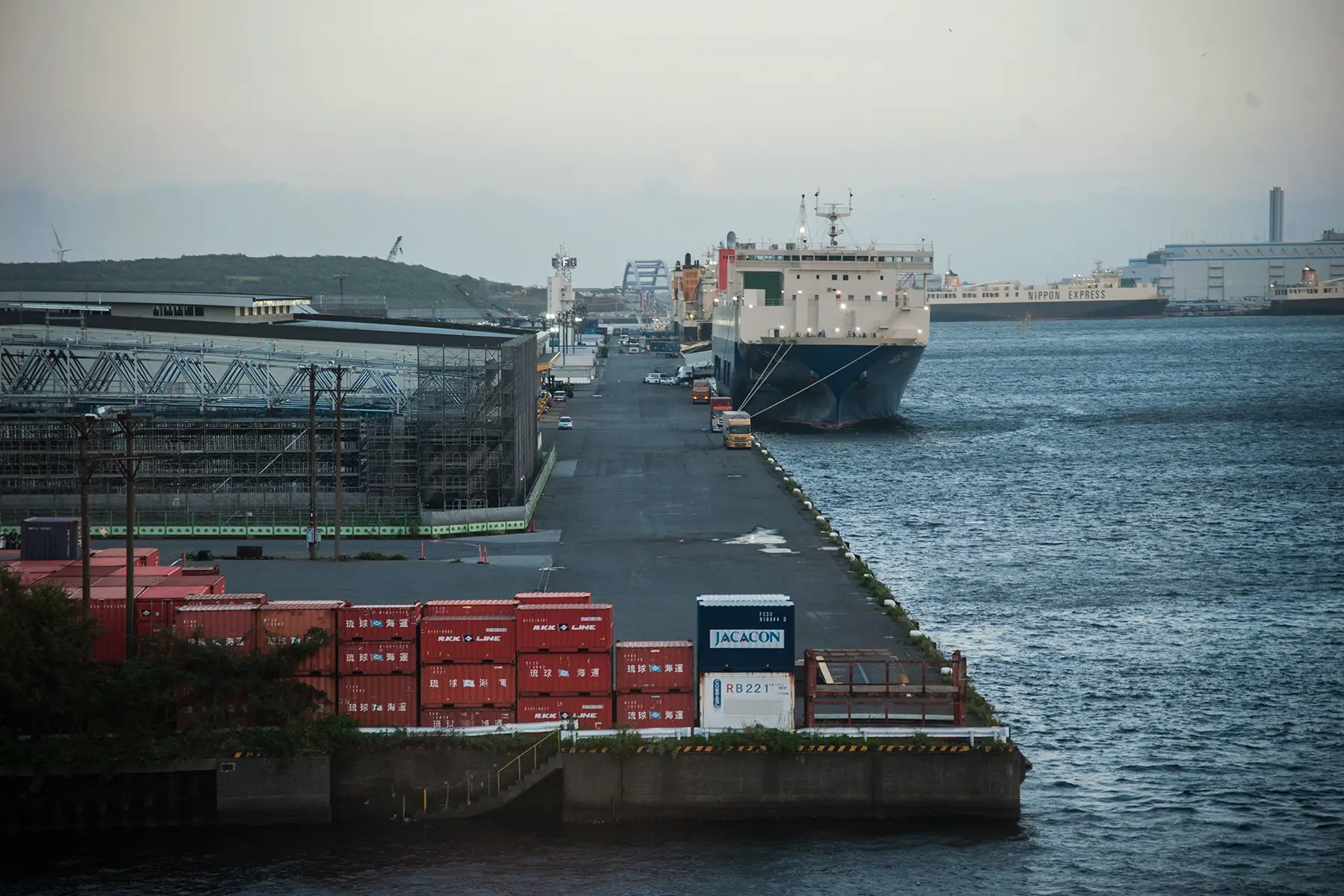
The main ports in Japan are Tokyo, Yokohama, Kobe, Nagoya, and Osaka, all of which have excellent onward transit connections across Japan by road and rail.
Who should use sea freight?
Sea freight is perfect if you have large or very heavy consignments, and time is not a pressing factor. A shipping container is a great bet if you have a lot of heavy furniture or want to import a car, for example.
It’s also a better option than air freight for the climate – sea freight’s carbon footprint is up to 30 times lower. However, the types of fuel used in shipping and the long distances involved offsets much of this.
One downside of sea freight is that it can be less reliable than air freight. Unlike airplanes, sea cargo is more susceptible to bad weather, dock workers’ strikes, blockages of key shipping routes, and even pirate attacks. For example, the six-day-long Suez Canal blockage in March 2021 played havoc with global supply chains.
How does sea cargo work?
There are two main options for shipping cargo by sea. These are Less-than-container load (LCL) and Full container load (FCL).
With LCL, you effectively ‘rent’ part of a container, sharing the rest with others. This is the cheapest option. With FCL, you have the whole container to yourself. Standard shipping containers are 2.43m wide x 2.39m high and either 6.06m or 12.2m long.
Any international removal firm will pack your belongings and transport them to the port for shipment. Once in Japan, customs must clear the consignment, which is then forwarded to the final address, usually by road.
How long does sea freight take?
Budget for at least 50–60 days when booking your shipment, as a typical door-to-door sea freight service can take a couple of months.

Like air cargo, international shipping lines run to schedules. Because of the paperwork, checks, and logistics, book your LCL or FCL slot no later than two weeks before sailing. Your chosen agent will advise on schedules.
Transit times are one of the downsides of sea freight. In theory, it takes 28 days to send a consignment from Rotterdam to Yokohama, but in practice, it can take much longer due to export and import formalities.
Once the goods dock in Japan, the speed of customs clearance depends on how busy the port is. Facilities are efficient, but customs checks are thorough. Allow three to four days for the consignment to be released.
How much does maritime freight cost?
Rates for a 12.2m container to Japan range from $850 to $4,500. There are also different tariffs depending on whether you need a full container on the ship or are prepared to share with others. For FCL, you pay a lump sum for the whole container, while LCL costs depend on volume.
As shipping rates are generally calculated on volume, not weight, you can pack heavy items – including the kitchen sink! While there are many different payment structures in the cargo world, you can pay for most personal cargo upfront or upon arrival in Japan before clearance and release.
How should I pack for shipping?
Although sea freight is a less ‘intense’ method than air, it is always a good idea to pack well. Secure your belongings well in case of stormy seas, and protect them well from moisture.
If you use a professional removal company, they will supply the boxes and pack your belongings for you. This ensures that the consignment is in great shape for the voyage.
How do I find a freight company?
Many freight forwarding companies offer frequent services between Europe and Japan. These include, but are not limited to, Yamato Europe (欧州ヤマト運輸), DFS Worldwide, and Logistics Plus.
International relocation companies
There are many companies specializing in the A to Z of international relocation. These agents handle the entire process, from packing up your house in your home country to unpacking at the final destination in Japan.
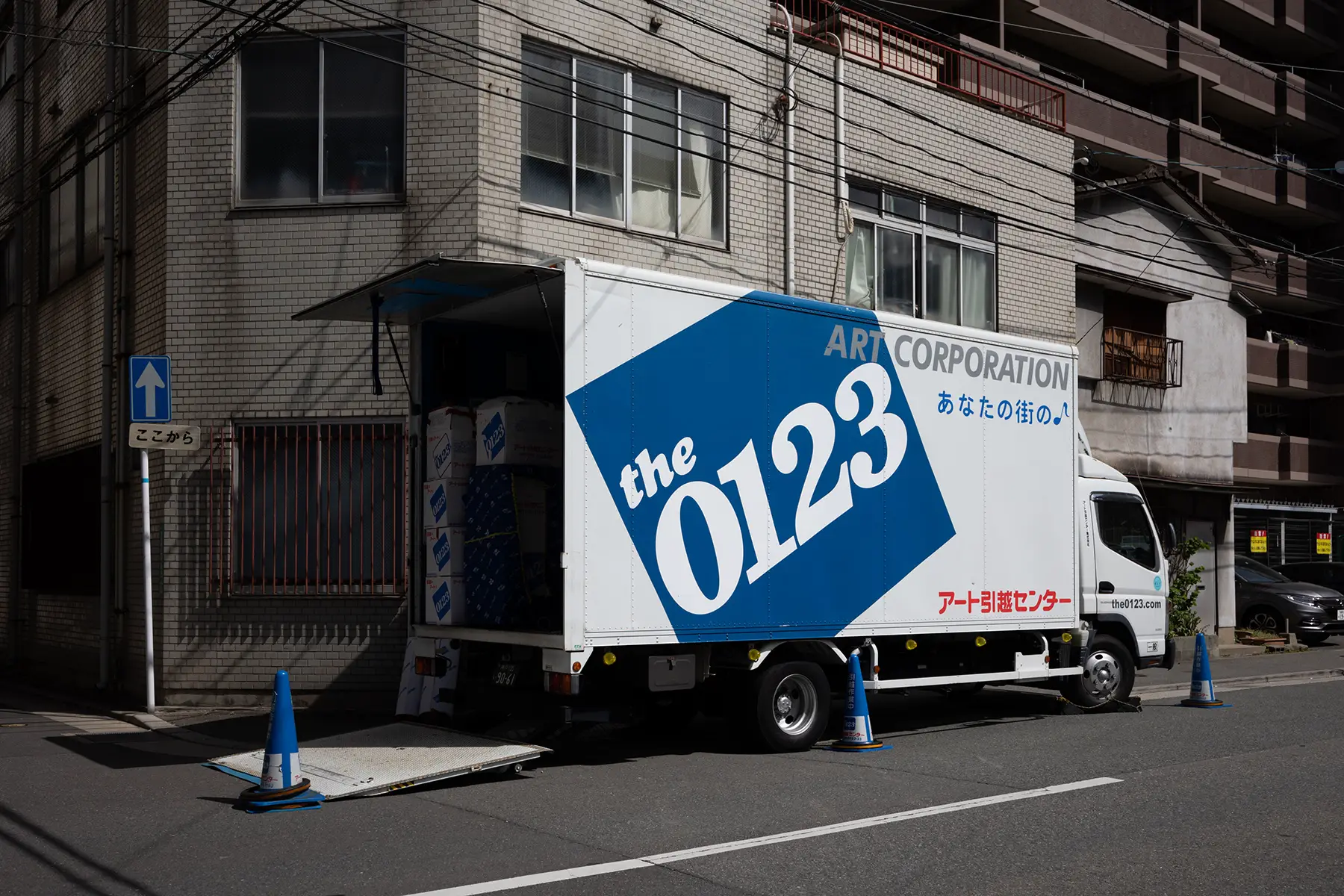
These services can take a lot of stress off your shoulders. Generally, their services include:
- Packing up everything in your home
- Taking it to the (air)port
- Arranging transfers
- Handling import and export formalities and helping you with the paperwork
As well as their ‘big ticket’ services, these companies supply packing materials and usually have a vessel tracking service so you can keep tabs on the progress of your shipment.
A door-to-door cargo service from UK to Japan can cost between $3,600 and $13,700 for a 6.06m container.
A good agent will clearly explain the procedures involved in a removal to Japan and will approach the move with military precision. Selecting the right shipping agent is one of the most important aspects of relocating, so do your research.
How do I choose an international relocation company?
When scoping out international removal companies, you should check their credentials, read reviews, and ask other internationals for recommendations. Don’t let cheap quotes sway you – often, the best agents charge a premium, but it tends to be worth the lack of stress.
There are several ways to make sure you hire a reputable company. For example, many are members of international organizations such as the International Federation of Freight Forwarders Associations (FIATA – 国際貨物輸送業者協会連合会) or the International Air Transport Association (IATA – 国際航空運送協会). Japanese organizations for freight include:
- Japan Aircargo Forwarders Association (JAFA – 航空貨物運送協会)
- Japan International Freight Fowarders Association Inc. (JIFFA – 国際フレイトフォワーダーズ協会)
Should I handle the move myself or hire a moving company?
If you are moving a few small items or are on a tight budget, you might consider organizing your own move. However, once you get beyond a couple of suitcases, it’s a good idea to leave it to the pros.
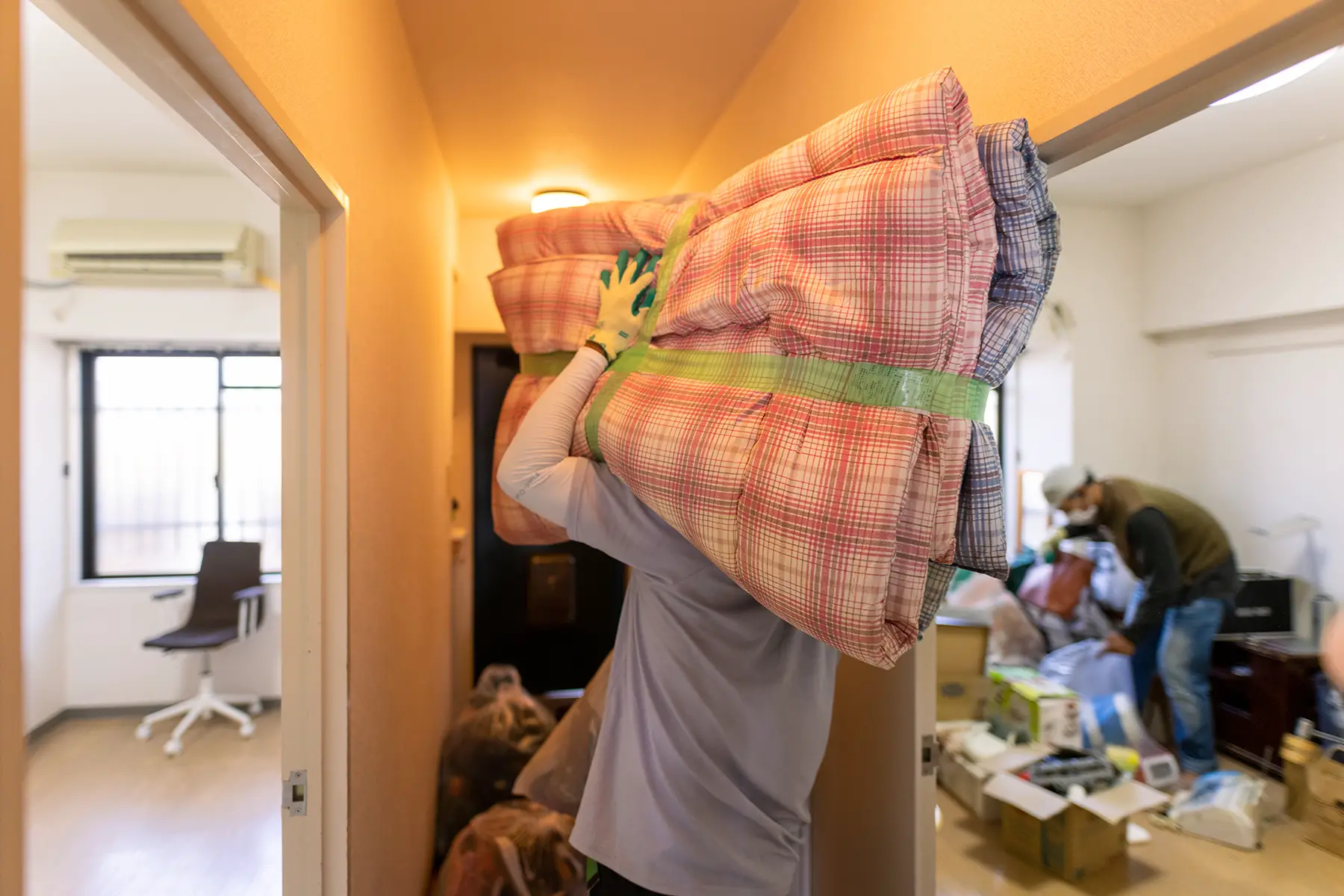
Although moving companies come with a hefty price tag, hiring one will make your move easier. They can give you peace of mind, as you know that the company will pack your belongings safely – and if anything happens to them, they should have a reliable insurance policy.
Furthermore, they can handle the paperwork and customs issues, which could be a challenge if you don’t already speak Japanese.
Relocating vehicles and pets
Whether you want to take your Porsche or pooch to Japan, the country has clear pet and vehicle import regulations.
How do I move my car to Japan?
Importing a car to Japan is much easier if you hire a company specializing in moving them. However, if you decide to do it yourself, you must submit forms to customs, carry out tests, and register your vehicle with the Ministry of Land, Infrastructure, Transportation and Tourism (MLIT – 国土交通省)
When importing a car, you must provide an import declaration, invoice, freight account of cargo, statement of premium due, and bill of lading. Those moving to Japan for less than a year require a Carnet de Passages en Douane (CPD – カルネ) and a list of people who will drive the vehicle.
Typically, a foreign car being imported to Japan will be subject to import duty. However, if the vehicle is part of a wider consignment of household items, it is possible to secure a tax exemption from the customs authority. Bring all the vehicle’s registration documents from your home country.
Once the car is in Japan, the MLIT will inspect and test it. You must then register the vehicle with the local Land Transport Office (運輸局) before driving.
How do I move to Japan with pets?
If you have dogs and cats, they can come on your Japanese adventure. You must fill out documentation, vaccinate your pet, and carry out medical checks. Make sure to organize this well beforehand, as there are several rules for relocating pets to Japan.
First, make sure that your pet has a microchip. You’ll also need to vaccinate them against rabies – this involves two shots at least 30 days apart, followed by an antibody test. After 180 days, you may travel to Japan with your pet. You must also notify the Animal Quarantine Service (動物検疫所) that you are bringing your animal to Japan more than 40 days before arriving.

Before leaving your home country, you must arrange a medical inspection for your animal. This involves checking for rabies (and leptospirosis for dogs). You’ll require certificates to demonstrate that your animal has a microchip and has had vaccinations and tests.
Pets must enter Japan only through select airports, which include Narita, Haneda, and Kansai. Upon arrival, the Animal Quarantine Service will inspect them and decide whether the animal may enter the country. This usually takes a few hours.
If they encounter problems, they may place your pet in quarantine for up to 180 days.
Transporting your pet
Make sure you have a suitable carrier for your animal. It should have enough room for them and be secure to prevent them from escaping. Check with your airline for more advice about whether your pet will travel in the cabin or the hold.
Many companies offer professional pet relocation services to Japan. These companies know the latest regulations on importing pets into the country, and can provide reassurance at this stressful time for the pet and owner.
The Ministry of Agriculture (農林水産省), Forestry and Fisheries also provides an in-depth guide in several languages for importing your cat or dog.
Customs and importing goods into Japan
Japan Customs handle imports of personal effects. Regulations state that you must be in Japan before they clear and release your items.
Once the consignment arrives in Japan, a customs agent will inspect it. Used personal effects, furniture, and household goods do not need to pay any import duties if they have been in the owner’s possession and used for at least a year. It’s a good idea to dig out receipts to prove dates of purchase if you still have them.
You won’t need to go to the warehouse yourself, but you will need to give the clearance agent a copy of your passport (パスポート) and Japanese residence visa. Your agent must also submit customs form C5360-2 (PDF), an import customs declaration, a bill of lading, and the waybill.

Narita Airport Customs agents are renowned for paying close attention to inventories/packing lists. Ensure the lists accurately reflect what is inside the boxes (your shipping agent should advise you on this).
There are several types of goods that you may not bring into Japan, such as firearms and narcotics. Check Japan Customs to find out more about controls and restrictions.
Useful resources
- Japan Automobile Federation – details of the process for importing a car
- Japan Customs – official site providing information and news on import and export rules
- Ministry of Agriculture, Forestry and Fisheries – procedure for moving pets to Japan
- Ministry of Land, Infrastructure and Transport (MLIT) – information on vehicle inspection and registration
